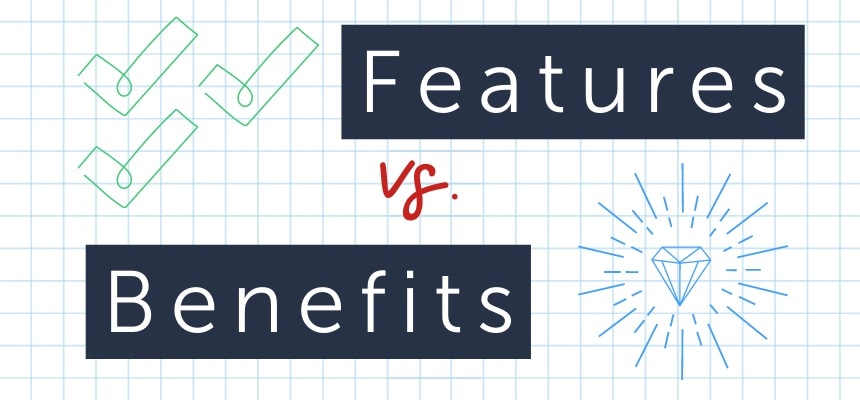
Many scientific products come with some of the most technologically advanced features of any product in the world. But why should your customer care? That is the challenge marketers face when writing copy for their product messaging.
A potential customer might only have a few seconds to consider your product offering. So should you lead your messaging with the latest feature? Or should you lead with the benefit that feature has on your customer's life? Below we will explore this and look at some real-world examples.
What are features in marketing copy?
Features are the factual aspects of your product.
What are benefits in marketing copy?
Benefits are why the features matter to your customer.
Why is your product messaging important?
Before we look at how and why to use features and benefits in your marketing copy, let’s quickly identify some of the reasons why product messaging is essential.
- Communicate the relevance and value of your products to your potential customers
- Differentiates your company from your competitors
- Always on digital messaging distributes at scale.
Ultimately, effective product messaging will allow you to generate more leads and sell more of your products.
When to use features and benefits?
Both features and benefits have a place in your product messaging. If we think about a traditional marketing funnel, then in the awareness stage, we might be running an ad. Here, leading with a benefit will more likely lead to the type of impact we are looking for (impressions, CTR, etc.).
As a customer moves down the funnel, they are likely to be more aware of the benefits of your product and will now want to understand how the features solve their problems. They will also want to compare the features against your competitors. Content with a list of features like a product page would be effective at this stage.
How to use features and benefits?
To develop your messaging, start by:
- Identifying a feature
- Decide how that feature impacts your customer? (i.e. identify its benefits)
- Create impactful messaging
For your internal team, who has spent hours developing and talking about your products, the benefits might be obvious. But nobody cares about your product as much as you do. So to answer part 2, you may want to run surveys or interviews with your existing customers to really understand how your product benefits them.
Matrix for product messaging
Below we will look at five examples of features and benefits in action, a well-known example from Apple, an internal example from the team at AZoNetwork, and three examples from companies making Wireless Gas detectors, Microscopes, and Mass Spectrometer.
.jpg)
In each example above, you can see how the copywriter has combined the feature and benefit to create a product message that will resonate with the target market and create an emotive response.
The messaging is unique, truthful, talks to the customer's needs, and inspires the next action.
Conclusion
When you need to make an instant impression, leading with benefits will make the most impact on potential customers. But both features and benefits work effectively in different content and at different stages in the buying journey. The above matrix can give you a starting point to start creating effective messaging that will land with your potential customers.
Find out how we elevate the reach of your product pages here.